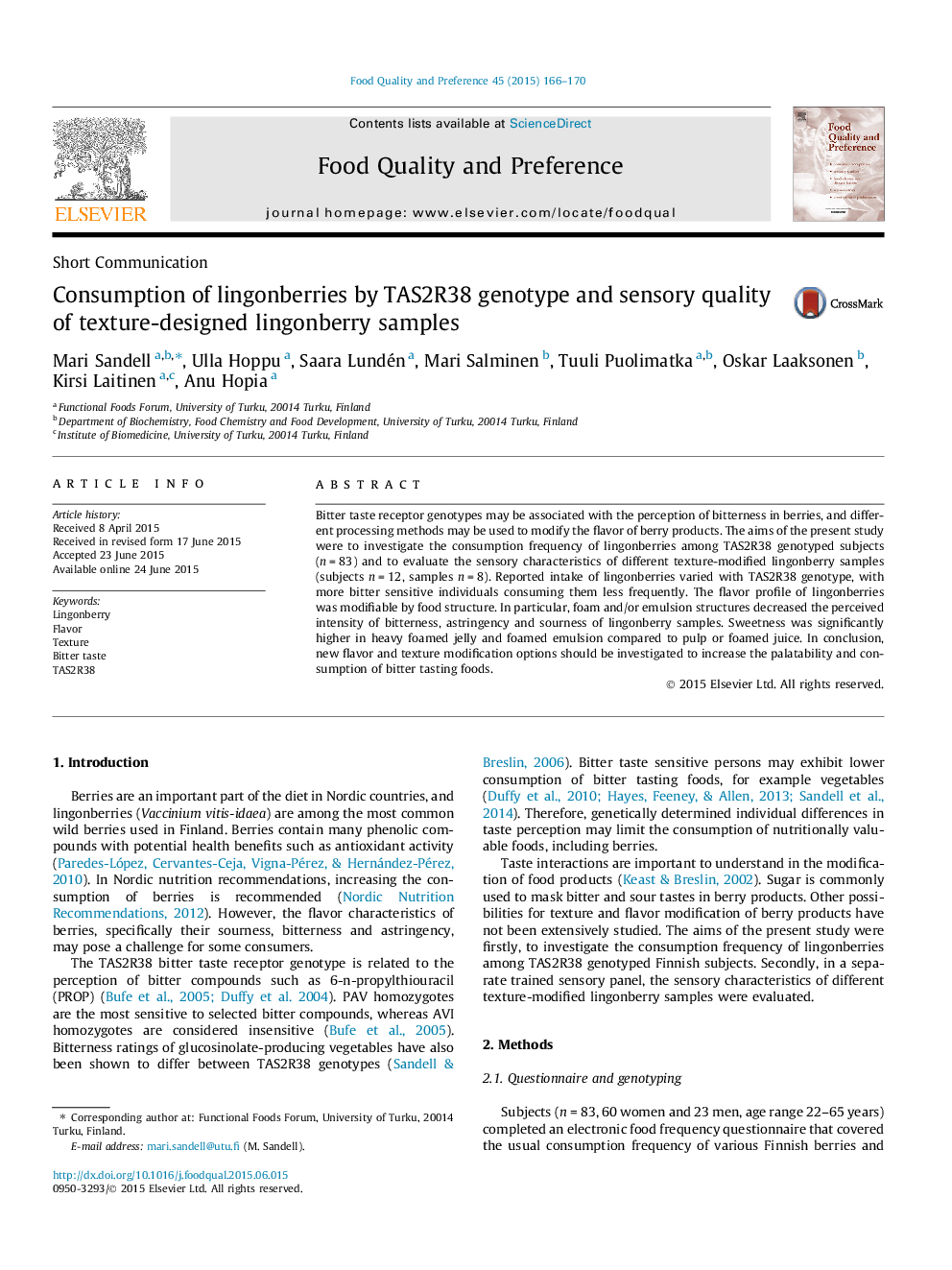| Article ID | Journal | Published Year | Pages | File Type |
|---|---|---|---|---|
| 4316934 | Food Quality and Preference | 2015 | 5 Pages |
•Unsweetened pressed lingonberry juice is naturally bitter, sour and astringent.•The berry skin matrix in the pulp decreases astringency compared to the juice.•Foamed and/or emulsified food structures were significant taste modifiers.•Genetic variation in the TAS2R38 taste receptor influences the consumption of lingonberries.
Bitter taste receptor genotypes may be associated with the perception of bitterness in berries, and different processing methods may be used to modify the flavor of berry products. The aims of the present study were to investigate the consumption frequency of lingonberries among TAS2R38 genotyped subjects (n = 83) and to evaluate the sensory characteristics of different texture-modified lingonberry samples (subjects n = 12, samples n = 8). Reported intake of lingonberries varied with TAS2R38 genotype, with more bitter sensitive individuals consuming them less frequently. The flavor profile of lingonberries was modifiable by food structure. In particular, foam and/or emulsion structures decreased the perceived intensity of bitterness, astringency and sourness of lingonberry samples. Sweetness was significantly higher in heavy foamed jelly and foamed emulsion compared to pulp or foamed juice. In conclusion, new flavor and texture modification options should be investigated to increase the palatability and consumption of bitter tasting foods.
